Achieve Extreme Agility with upgrades to Siebel 17.x/18.x
Siebel CRM has been releasing innovation on a yearly basis since 2012 and with every new innovation pack, new features have been released that have greatly benefited the plethora of customers that use Siebel to solve their business needs. In the long history of Siebel, release of Open UI back in IP2013 was considered a transformational release of sorts as it changed Siebel in way that allowed it to be used like a true modern web standards based CRM application.

In keeping up with the trend of releasing transformational features, Siebel IP2017 came along that was focused on achieving business agility for customers. It is probably the biggest and by far the boldest Siebel release since 2013. Siebel 17.x/18.x has been packed with a number of features targeted at positively impacting Business Agility. It endeavors to provide customers with the tools to operate Siebel at a lower cost than ever before, and challenge customers to look at other cloud offerings as an add on rather than a replacement to Siebel.
Why upgrade to Siebel 17.x/18.x
The new release brings modern agility principles native to Siebel and aims to modernize how customers configure, manage and deploy Siebel. The latest release also brings in the concept of configuration management to repository by allowing controlled access to repository assets. It’s an important pre-requisite for customers to use parallel and collaborative repository development.
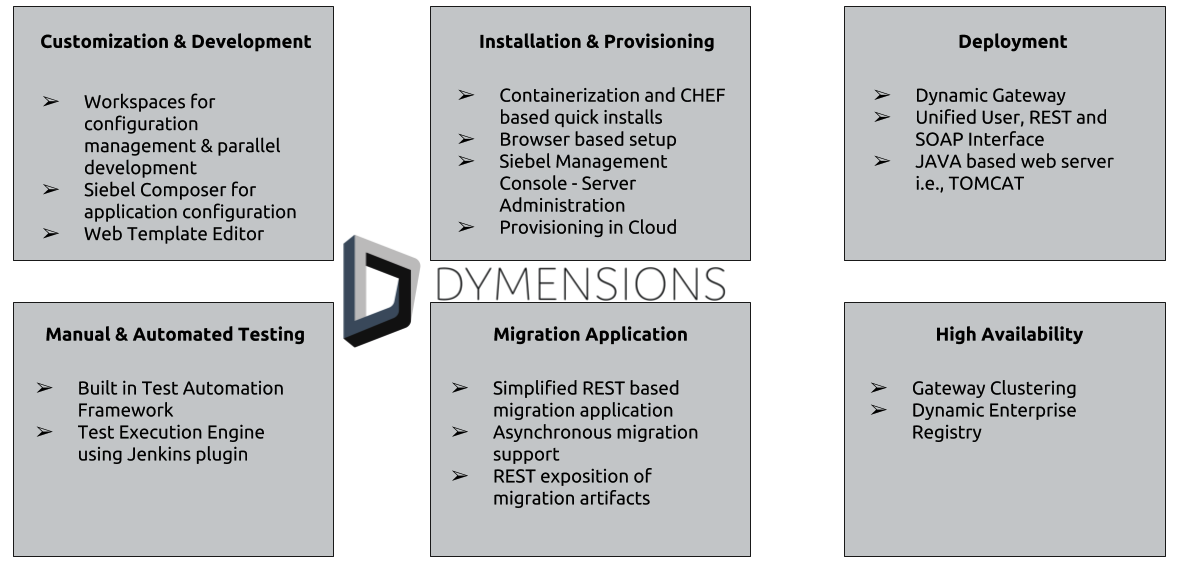
Some of the key innovations include: - Siebel Composer - For Application Configuration - Workspaces - Configuration Management and Parallel Branches - Siebel Approval Manager - Enables automation of devops for a development lifecycle through governance - Siebel Management Console - Browser based deployment of Siebel - Deployment of Siebel with no downtime - No file based SRF - Replaced by Runtime Repository
- Test Automation Framework - Record and playback of tests - Cloud based provisioning of Siebel using REST - Easy deployment on AWS, Azure, Oracle Cloud Infrastructure - Siebel Migration - REST based migration of artifacts from source to target environment
Key Advantages of IP17/18
Easier Setup and Configuration of Siebel instances With the key innovations done in Siebel 17/18, siebel instances can be brought up in quick time in both On Premise as well as on cloud. There are a variety of methods that can be used to achieve this setup/configuration is super quick manner. Some of these options include:
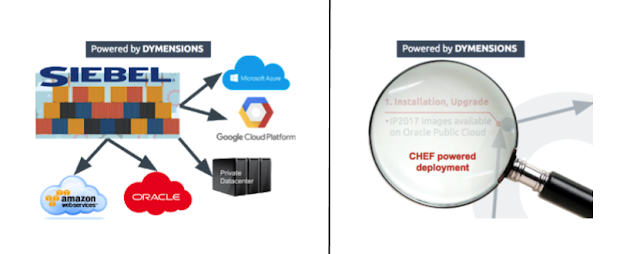
- Use of Docker containers - Container based deployment allows for rapid deployment using packaged images and containers either on your own data centers or in IaaS offering such as Oracle Cloud Infrastructure, Amazon
- Use of CHEF to install Siebel on Virtual Machines
As of IP2017, Siebel has moved over to Tomcat, a java based web server that is pre-packaged with Siebel, precluding the need to do a pre-install of web server. These innovations help customers with reduce cost of installation and maintenance.
Simplified Customization and Development
Workspaces - Parallel Development The introduction of workspaces was a foundation block for Siebel composer and brought in source control management to repository artifacts within the database itself. It negates the need for having a local database for making configuration changes in Siebel (using Siebel Tools or Web Tools).

Workspaces also provide the capability of working against multiple releases in parallel in a single database due to support of deeper hierarchy using integration and developer workspaces. This reduces the cost of development and helps with reduced cost of development operations.
Siebel Composer
Siebel composer enables application configuration to be done via browser using Web Tools. It uses the Open UI framework and emulates Siebel Tools thereby enabling easier migration of users from Siebel Tools. It revolutionizes the way Siebel configuration is done and aims to provide users a visually guided web based Siebel integrated developer environment for easier customization.
Some of the key features include:
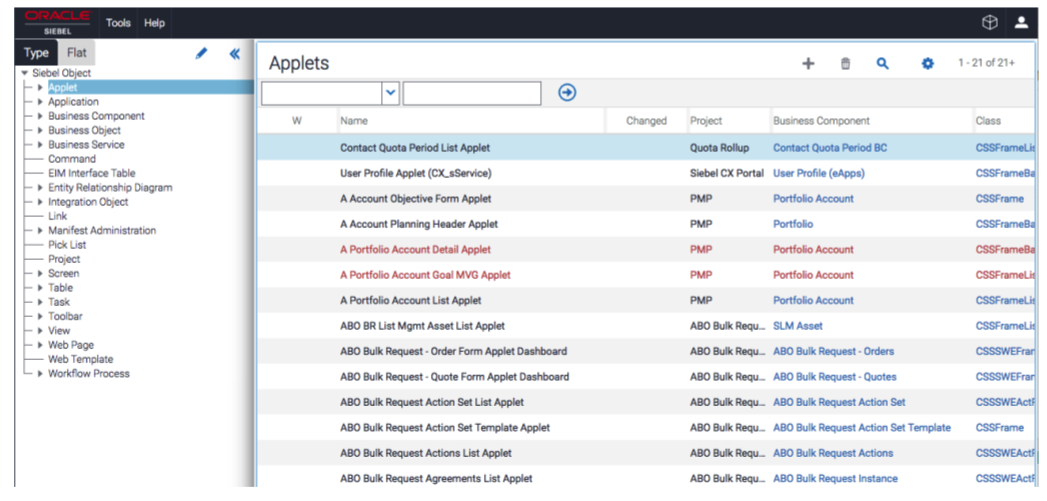
- Browser based configuration using Web Tools - Replacement of file based SRF with Runtime Repository in the database - Migration of web template files to database objects in the repository - In-app preview of configuration changes within the context of workspace - Web Template editor with smart inline editing and preview
Zero Downtime Deployment
Using the concept of workspaces and runtime repository, users can preview app configuration changes and publish them with absolutely no downtime and no restart of Siebel server. IP17/18 allows changes to be done using a workspace, go through governance process for review/approval and subsequently delivered and published without any downtime.
siebel Approval Manager
Siebel Approval Manager is a lightweight standalone application supporting all form factors, deployed independent of Siebel meant to provide governance to Siebel development process.
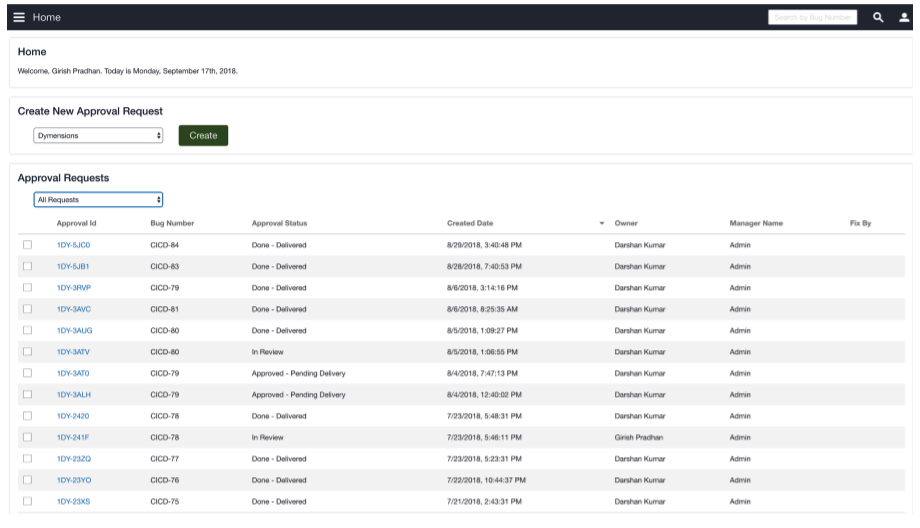
The application can be customized to integrate with a variety of systems used within the development use REST. Some example of systems that can be integrated are Siebel Tools for workspaces, Issue tracking systems like JIRA, bug tracking systems like bugzilla etc, source code control systems like Github, Clearcase etc. In addition, it also supports email integrations for both notifications and approvals across the various actors of a development process.
Provisioning & Deployment - Supports On Premise and Cloud based deployments
Browser Based Deployment Siebel 17/18 focuses on agility and hence supports a browser based setup for deployment using Siebel Management Console. Using this, one can deploy all the various components of Siebel topology like Gateway, Siebel Server, Application Interface, Enterprise Cache as well as Constraint Engine. SMC comes with sample provisioning profiles that can be be used as a base for deployment. SMC can also be used as of 18.7 for doing server management administration.

Provisioning on Cloud
Siebel 17/18 has several features that simplify the provisioning of Siebel in any IaaS/PaaS solution. Starting with Installation and Post-Install configuration, which is now browser based. This means that one can do a silent deployment of the software on to a remote cloud node, or spin up a docker container with just the Siebel software, or use CHEF to lay down the required software, and any of these can be remotely configured as a standalone deployment, all from a browser. Leveraging the Dynamic Gateway, software nodes can be attached to an already running enterprise, from the browser as well.
Native support for REST APIs for data, metadata, services, configuration & management facilitate a wide range of integrations including cloud to ground app integration, DevOps tooling, monitoring and management.
Siebel 17/18 runs some of the latest Apache products that are cloud ready and available on PaaS offerings. It also runs seamless on Oracle Database as a Service offering and supports pluggable databases.
Deployment - Dynamic Gateway
Siebel introduces the concept of dynamic gateway in Siebel 17 thereby providing dynamic address registry for Siebel servers and server components. Due to its dynamic nature, it allows users to add and remove servers without any downtime. Siebel Gateway also includes persistent storage in the registry for configuration information for Siebel Server, Application Interface and other installable components.
As of 18.5, Siebel started supporting a native clustering feature for Gateway (an optional feature) that provides for high availability for Siebel customers.
Testing Automation Framework - Supports Manual and Automated Testing
Test Automation Framework A very intuitive and simple to be use test automation framework is a key value proposition for Siebel 17/18 that provides for capabilities to create test scripts using record and playback functionality. The record and playback capabilities eliminates the need for manual scripting of test scripts for automation and hence reduces the cost of test script authoring/automation significantly.
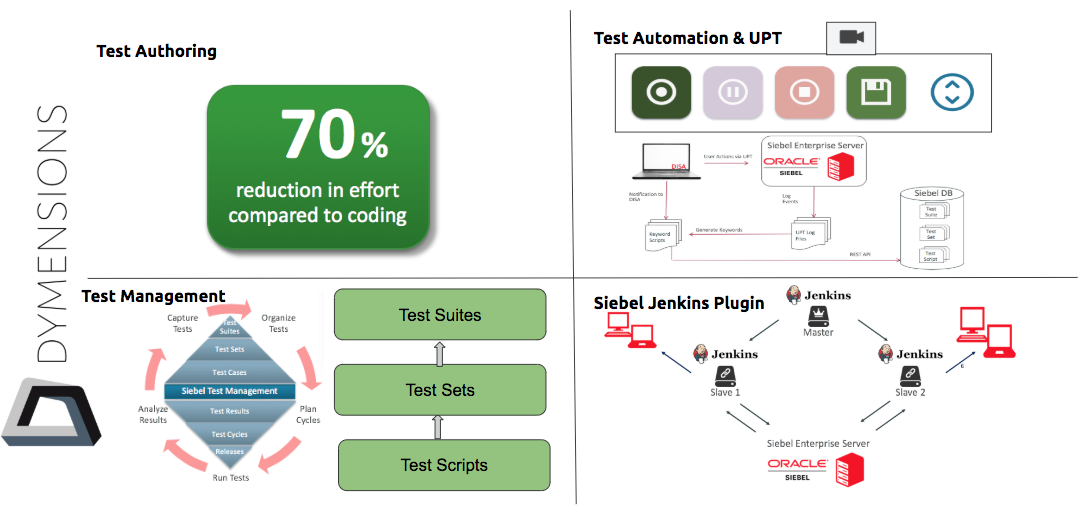
Siebel also provides end to end test management capabilities within Siebel 17/18, where scripts and test plans can be managed. The administration module allows for central management of test scripts , test sets and test suites including support for individual execution of test scripts as batch execution using test suites. Test automation makes use of Usage Pattern Tracking that has significant enhancements to track user actions at a granular level. Jenkins Plugin for Siebel Test Execution Test automation framework also supports execution of lights out automated testing via the use of Jenkins plugin (an open source software used for Continuous Integration and Continuous Delivery) that was released with Siebel 17. This plugin helps with execution of test scripts in an automated fashion on a set of servers. The plugin can be used to manage distributed and parallel automation batch runs.
Simplified and Easy Migration Application
One of the key value propositions of Siebel 17/18 is the migration application that is a simple, intuitive web based application. Migration application that is deployed and configured using Siebel Management console automates the migration flow based on the utilities used for migration of artifacts from source to target environment. It utilizes the database utilities exposed via REST to setup and plan for a migration flow to be used for dev2test2prod migration.
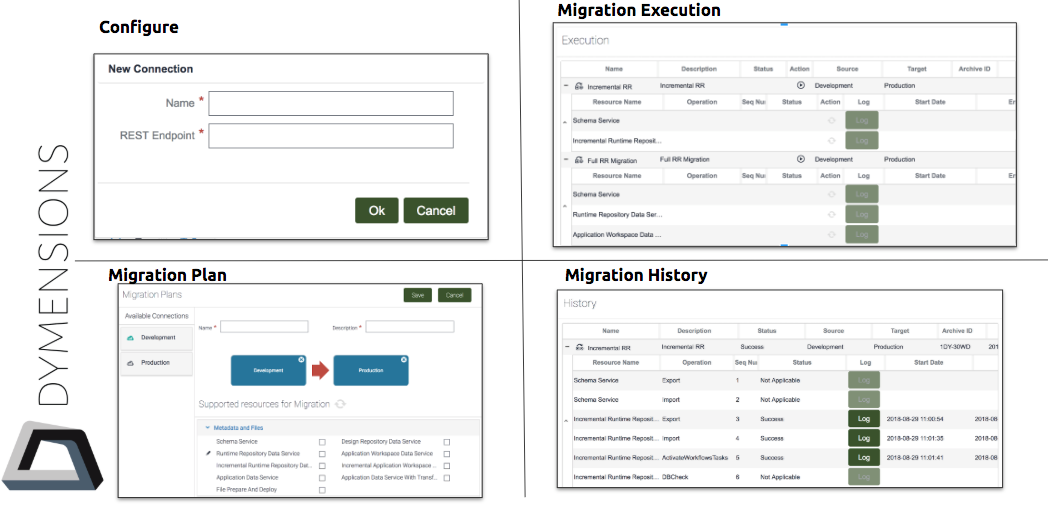
As of 18.7 update, Siebel also supports asynchronous migration whereby there is no need to have both the source and target environments available for creation and execution of a migration plan. This solves the real-world deployments that most of Siebel customers use in a migration scenario for Dev2Prod.
Dymensions Perspective
At Dymensions, we believe that most of Siebel customers want to not only get more value out of their existing investment but also use Siebel as a key aspect of their CRM strategy and potentially use other cloud based software services. With the innovations around agility and modern developer experience done with Siebel 17/18, we believe customers will greatly benefit by upgrading to the latest releases and set them up to embrace the continuous release model that Siebel has embarked on. Siebel has a strong roadmap around Business Agility, Industry Innovation and Customer Experience that they plan to deliver with the continuous release model.
Dymensions has been innovating using the tools and solutions provided by Siebel 17/18 and building value added solutions to solve the DevOps problem that most of Siebel customers have. Siebel 17/18 brings more modern developer experience to its developers and users in addition to business agility and helps positioning the customers for the future.
At Dymensions, we are committed to providing these solutions including turnkey Siebel upgrades that will maximize the investment Siebel customers have already make in the product.


